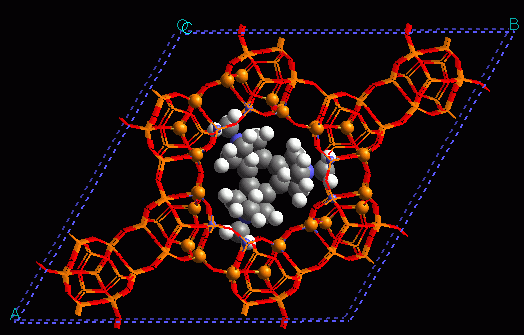An interest does exist in synthesising new zeotype structures on the ground of
-among others- potentially important industrial applications. Whether this topic
has been traditionally regarded as a series of cooking recipes, the recent panorama
is quite much changed and a general understanding is growing steadily. Even more
recent is the rational use of computational tools in this respect and our approach
comes from the atomistic forcefield approach that we have been using successfully
to so many other research topics related to zeolites. The role of templates and
structure directing agents is being developed and the energy interaction with the
zeolite framework is being revised and their different contributions studied
separately to see, for example, how van der Waals and electrostatic factors
influence the final synthesised material. Our first study on this topic has
been the templating role of the trispirrolidinium cation in the synthesis of
Al-ZSM-18 zeolite. Our results have validated the technique used and also the
template location has been optimised: two positions for the cation were found and
the minimum in energy was shown to be the experimentally observed by XRD. Secondly,
the important result of predicting the Al distribution in this material was
found and its preferential location in the 3-T rings was an important result
from the calculations, which was justified in terms of the electrostatic interactions
of the cation with the negative charged brought in the zeolite framework by the
incorporation of Al atoms.

ZSM-18 with the trispyrrolidinium cation in its minimum energy
conformation as found by the calculations and in agreement with the XRD results.

